Boffer battles, waterboarding, and child Nazis: Nathan Thornburgh visits the dark, deep world of Live Action Role Playing in Denmark
They call it “bleed”: the way that whatever you learn or feel during the game can bleed into your life outside of the game. You’re just playing a role, of course, but that doesn’t mean that the experience ends when you’ve taken off the mask, or returned your foam weapon to the armory, or stopped simulating the rape of your prisoner.
This is larp, Live Action Role Playing, which on the surface may look like a glorified Comic-Con dress-up session. In the U.S., larp remains largely confined to hack-n-slash, where adults take a field on the weekend and bash each other with foam boffer weapons while quoting Lord of the Rings, or, more recently, Game of Thrones.
In Denmark, however, and throughout Scandinavia, it is darker, more evolved and far more popular than we in the U.S. could ever imagine. More than 100,000 Danes participate, a huge number for a country with fewer people than Indiana. Larp is the kingdom’s third-most popular organized activity, behind soccer and handball, ahead of basketball and everything else. And while the vast majority of larpers are weekend warriors or school groups letting off steam, there’s a deep vein of Danish larp that builds elaborate scenarios for exploring the darker nuances of human nature. So when I went to Denmark, an otherwise perfectly quaint little kingdom, the happiest country on earth, I went looking for bleed. And, in a dewy meadow north of Copenhagen, defeated by an army of adolescents from a Danish church group, I found it.
But first, Claus Raasted would like you to know something about simulated gang rape. Raasted is describing the conditions in Kapo, a larp in 2011 that functioned a bit like a modified Stanford Prison Experiment, and was named after the Jews who were brutalized into serving as Nazi enforcers in concentration camps.
Just as larpers use foam weapons to simulate violence without fear of death, they use a technique called ars amandi—Latin for ‘art of loving’—to simulate sex, mainly by touching arms and looking into someone’s eyes. And in a larp like Kapo, where the whole idea is to explore your own capacity for cruelty, this simulated sex isn’t always consensual. “Some of the group used gang-rape, with the arms, as a way of establishing dominance,” says Raasted. “And that’s not a nice thing. A lot nicer than real gang-rape, but still not nice.”

Raasted met me in a cafe a stone’s throw from Copenhagen’s royal palace to talk Nordic larp. He was easy to recognize, because even in civilian clothes—jeans and a hoodie—he looks every bit like the hulking, bearded son of Winterfell. No matter if he’s sipping a coffee, he still seems like he should have a battleaxe in hand.
Rassted is a founding father of Rollespilsfabrikken, the country’s largest larp organization, with nearly a thousand members. Their disheveled headquarters are part community center, part armory: gamers can come in, stay up all night playing Warhammer and drinking beer, then crash on the couch as the professionals of the morning shift come in and collect weapons for whatever larp they’re hosting that day. The professionals are in many ways educators: whether for schoolkids or adults, larps often have some pedagogic lessons attached. And Rollespilsfabrikken, like many cultural organizations in Denmark, is largely supported by the government.
So, too, was Kapo, which cost $40,000 and was funded in part by cultural grants and in part by the hundred or so participants who paid $50 each for the bleed that comes from 48 hours of being imprisoned, humiliated, and then given new prisoners to humiliate.
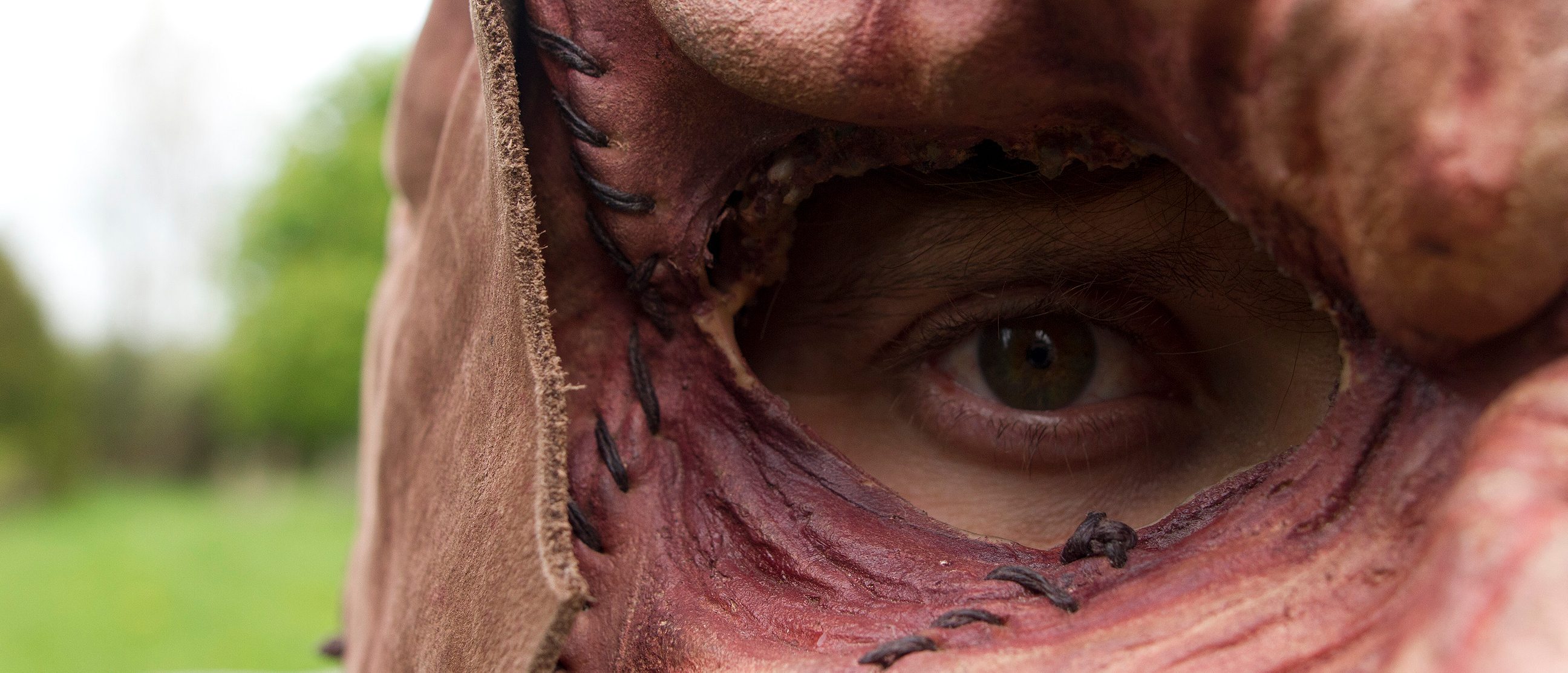
“The larp worked in four to six hours cycles,” says Raasted. “Every cycle would start with a cage that you would enter, as yourself. All you knew was that you’d been picked up by the police, you didn’t know why.”
“We had people coming in who said before the larp that they would never ever, even as a game, do inhuman stuff,” he says. “36 hours later that same guy is dragging a girl’s head through muddy water, screaming at her that she has to work faster or else he’ll get no food.” If there was a lesson to the larp, says Raasted, it was to think about what it’s like to be caught up in the penal system of a paranoid security state, in places like Gitmo, where “morality is something you can’t always afford.”
I ask if Kapo was a success, and Raasted said it was. As evidence, he said that about a third of the players broke down in tears afterwards. Just as you don’t watch Schindler’s List for laughs, interactive entertainment like Kapo should be judged by the power of its emotional impact, good or bad. With movies, you’re just watching someone else’s story. In Kapo, you are there, touching it, tasting it, inflicting the story on yourself and on others.
In many larps, the players and their actions, not a script, determine the outcome. The bad guys often win.
Kapo is far from the most controversial larp Raasted has been involved in. “Heroes of the Eastern Front” was a 2008 larp that saw children playing the roles of Communist and Nazi soldiers. That same year, “Motherland” envisioned an alternate history in which Germany had won World War II. Players spent the larp torturing each other or training to assassinating an aging Adolf Hitler. In many of these larps, the players and their actions, not a script, determine the eventual outcome. The bad guys often win.
In Sweden, larp king Martin Ericsson, who has collaborated with Joss Whedon and other master storytellers, has created equally harrowing larp scenarios. The Truth about Marika, which ran on Swedish TV and won a 2008 Interactive Emmy, was a transmedia scavenger hunt for clues about a kidnapped girl that the show led viewers to believe was a real kidnap victim (she wasn’t). In another larp, a host of players were to be slowly possessed by the ghosts of dead anarchists, over a period of months. The catch? They couldn’t tell those closest to them what was happening. Their families, their girlfriends, were left wondering what the hell was going on. By the time the larpers had become fully possessed, culminating in a kind of undead anarchist protest in the center of Stockholm, some of them had lost their relationships.
Even from that first conversation with Raasted about Kapo, it became clear why Nordic larp reaches levels of intensity that American larp never could. I began to imagine the lawsuits—emotional distress, anyone?—that would be filed in the U.S. immediately after Kapo or some of the Ericsson larps.
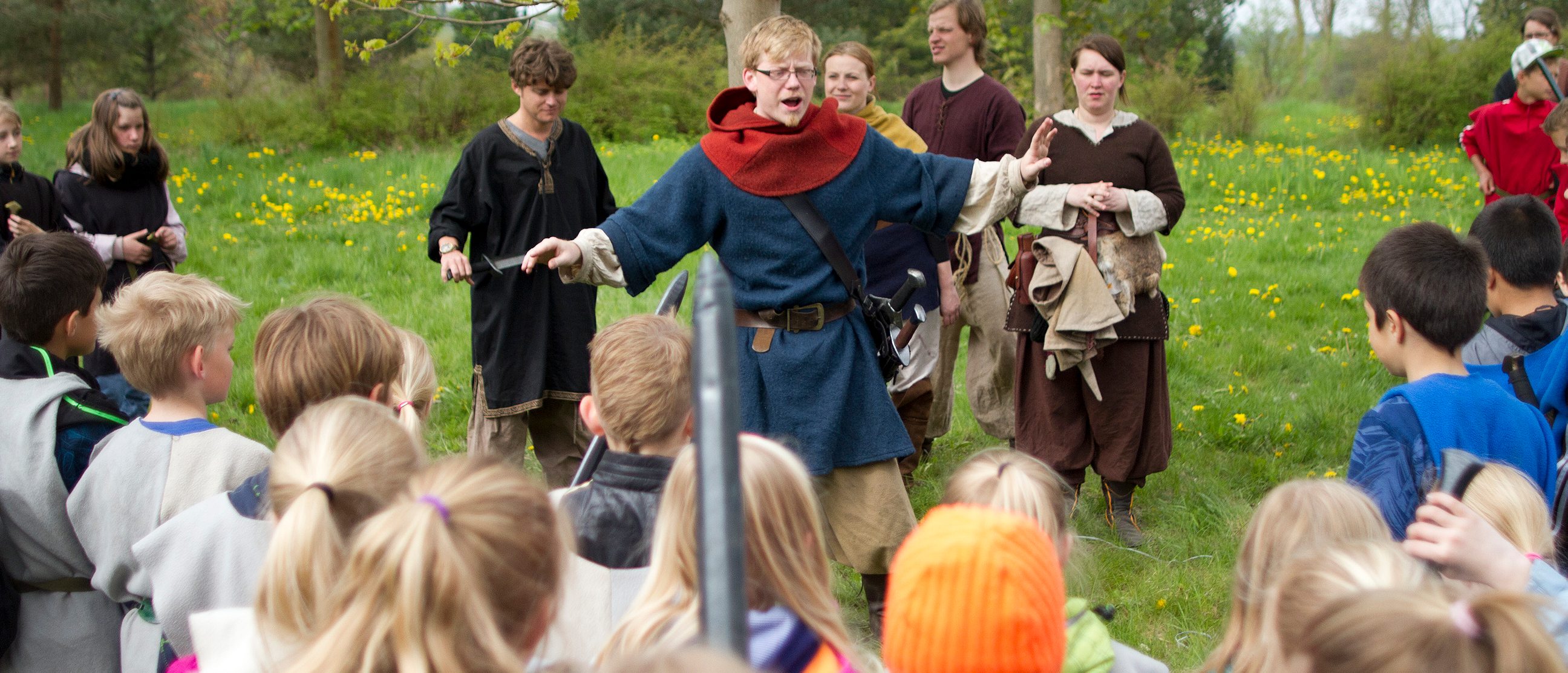
Author Lizzie Stark, whose book Leaving Mundania is a deep dive into larp subcultures in the U.S. and abroad, says that there are additional roadblocks to hosting more challenging larps. Finding a location whose insurance would cover a prison larp, for example. “We have a high degree of litigiousness in the U.S.,” she says. “It really raises the bar.”
“We’re afraid of bleed in the US… There’s sort of this no-touching rule. We have different physical boundaries,” says Stark. “I don’t think we trust each other. That’s the thing that blows me away in the Nordic scene: how much [game] managers trust each other.”
“I don’t think we’re ever going to have Kapo in the US,” she says. “We’re never going to be able to do System Denmark, where they built a dystopian future out of shipping containers.”
Nor, probably, do we in the U.S. need to imagine such dystopias. Denmark is not perfect, but it tries to be. They have built a maddeningly polite and decent European social welfare state whose very goodness likely inspires larpers to look for darkness in their entertainment. In the U.S., we don’t need to build an imaginary Gitmo. We created the real one. And anyone looking for bleak and spiritually impoverished police states can find them readily in the dark corners of most of our major cities.
There is another key difference between the two cultures, one that would make sense to anyone who has raised kids in the past 15 years or so in the U.S.: there’s an obsession in America with leveling the playing field for everyone, ensuring that no one’s feelings are hurt.
As Raasted, who spent years in Seattle, puts it, “American larp is very egalitarian. Anyone can participate. Even if you’re in a wheelchair, you can still play the fast-running elf. That means you have to have a lot of rules.”
In Nordic countries, there are far fewer rules. Or rather, the rules are more elemental, more Darwinian. “If you want to be good, you have to be good,” says Raasted. “If you’re fat, you’re fat.” Raasted is a fierce fighter in combat larps, one imagines, because he’s bigger and stronger than most. I saw one of his colleagues, Jonas Vandall, “slay” about two dozen middle-schoolers in five minutes because he was older, more aggressive and faster with his sword. Afterward, on the battlefield littered with the young dead, there was no complaint of unfairness.
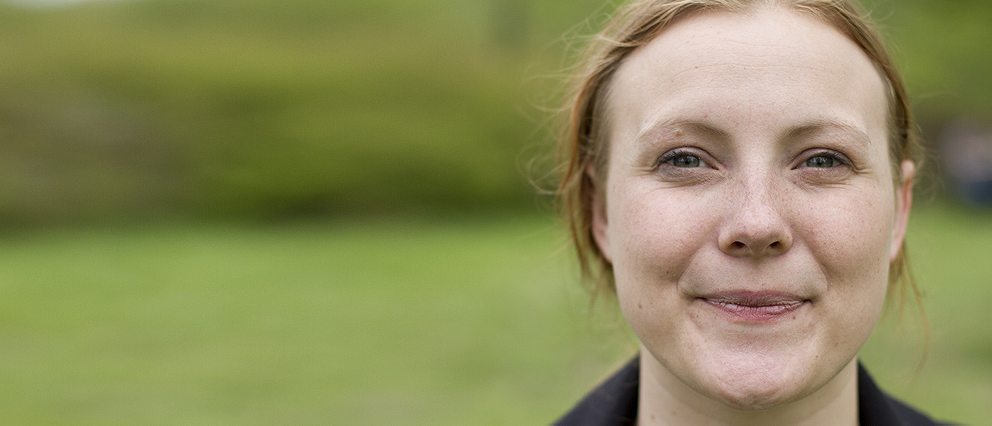
Which is not to say that there are no complaints to be had. A larper named Nynne Søs Rasmussen, employed by Raasted’s larp company called Rollespilsakademiet, said that being female in the world of Danish larp can be just as flummoxing as in any other male-dominated nerd culture.
“In high school, I was just an average-looking girl, not getting that much attention,” she says. “But then I went to my first larp, and the male attention was just overwhelming… That was pretty cool, the first year, but then it got pretty annoying. Like, seriously annoying. Everybody wanted to drink beer with you, they wanted to hang out with you, but they never took you seriously as a good player or a skilled organizer. You would go at the guys’ larp and you would cook for them or sew their costumes and it’s pretty boring.”
Historical accuracy—a point of pride for Danish larp—can also be misused as an excuse for relegating women to either princess or tavern-wench. But, as Rasmussen points out, if you can pretend there are minotaurs in the woods, you can damn sure pretend there are female knights. “So we made an association of women larpers and we started putting on armor and started fighting,” she said.
For women who want to participate in all-day combat larps in open fields, for example, there is a rather more quotidian problem: where to pee? Ever ingenious, another Rollespilsakademiet organizer named Sofie brought out a small plastic-wrapped device that was designed for medical use, but could clearly be put into practice as a kind of battle catheter. As Rasmussen put it later, “Larp is getting better, but we’re still far from equal.”
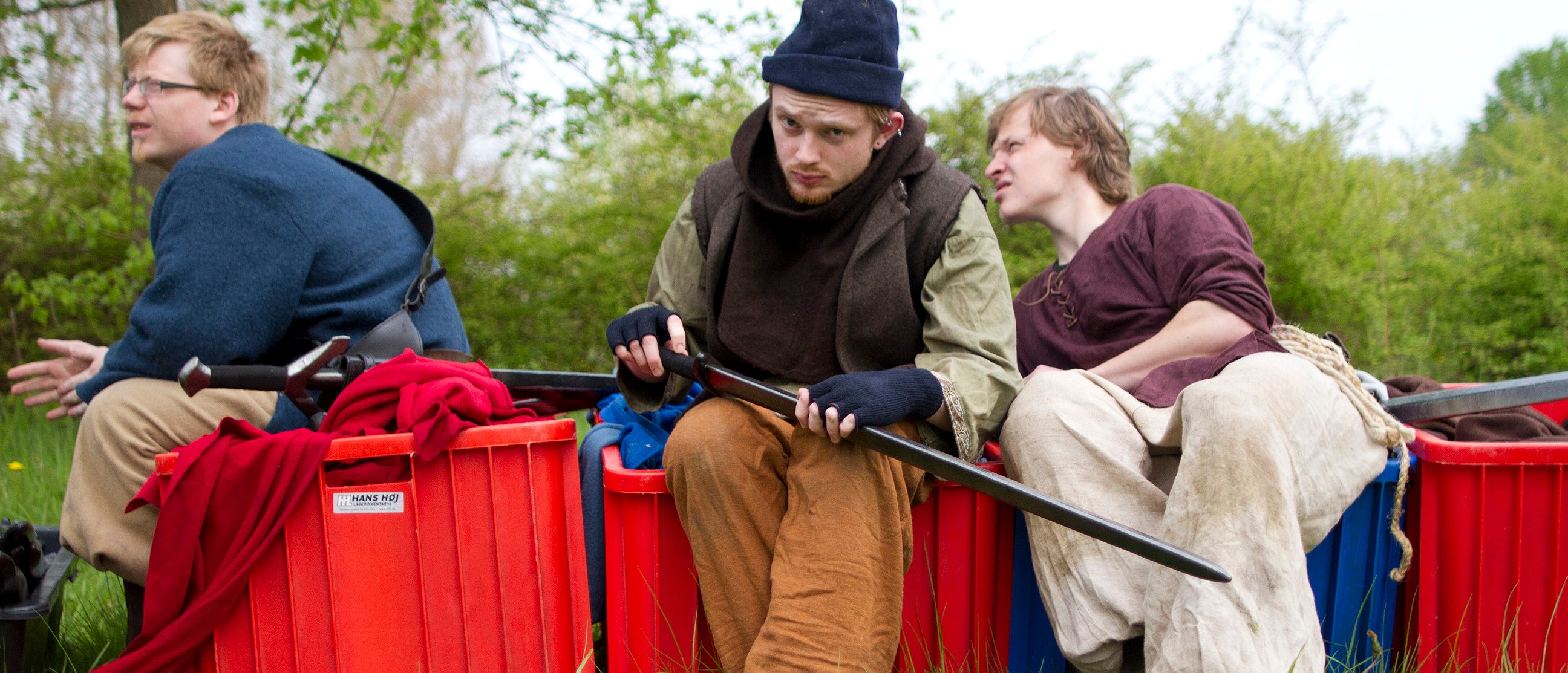
Raasted is careful to point out that the edgiest larp is not the norm. Larping became a national phenomenon in Denmark only after Hollywood brought Tolkien to the big screen.
“Instead of playing cops and robbers, cowboys and Indians, all of sudden kids were playing orcs and elves in the backyard,” says Raasted. “And then they found that there was this whole community out there doing this, saying here’s your foam sword, here’s your elf ears. And it might not look as good as the movies, but at least you’re in it.”
The emotion-based larp, the political larp, where you rape prisoners or try to envision life as a Nazi conscript, are not widely appreciated, even in Denmark. “There are a lot of people who think this is emotional masturbation with no reason,” says Raasted. “Just as there are people who would rather see a Hollywood blockbuster than an arthouse movie.” To this day, he says that 90% to 95% of larp in the country is straightforward Tolkien-inspired fantasy.
Larp is not a game, in his mind. It’s a special kind of theater: intimate, improvised, interactive.
Even in the minority, there is something beguiling about the boldness of the ideas behind complex Nordic larp. For artist Brody Condon, a friend of mine who was the first person I heard about larp from, that means stripping away most of the historical trappings, the costumes and other visuals of larp, and concentrating on the “engine” underneath.
Larp is not a game, in his mind. It’s a special kind of theater: intimate, improvised, interactive. He has been using larp techniques in his own works for years. In 2010 there was LevelFive, in which he meticulously recreated the kind of intense, emotional group encounter sessions—something along the lines of EST—that were popular in the 1970’s, and then brought in players to take roles in the sessions. “It’s like larp. I make the world, I make the guidelines for their character, and they show up,” he says. “They eat, shit and sleep in character. And they start to build narratives based on their stories, with each other.”
I tell him that LARP could totally invade the culture, change the way Americans think about entertainment, theater, gaming, whatever.
For a recent performance and video commissioned by the Aldrich Contemporary Art Museum in Ridgefield, CT., Condon flew Danish larper Bjarke Pedersen and seven others, including one of the designers of Kapo, to the U.S. for a five-day larp staged in an abandoned water mill on a working farm in upstate Wassaic, NY. The scenario: a futuristic commune of what he calls “psychedelic puritans”, living on a space station of sorts. They work the farm during the day, and hold evening therapy sessions like LevelFive did. The whole experience was turned into a sort of ethnographic film for the museum.
Condon says that larp is useful for helping museums and galleries engage audiences in a time of diminished revenue. I tell him it seems like it could totally invade the culture, change the way Americans think about entertainment, theater, gaming, whatever. I am not kidding; I actually think this. Condon says that people just getting into larp often have the same reaction, but that gets dimmed in stages.
“When you first hear about it, you think, man, this is going to change the world,” he says. “Then you actually go see one and realize, whoa, this is awkward and messy. But it still has potential. You just need to find your place in it.”
He can make money mixing larp and high art for museums. Ericsson can make money by doing it for Swedish television. Stark can make money writing a book about it. But without real, stable revenue—not necessarily a bonanza like what video game culture generates, but something as humble as the D&D manuals that have kept the company TSR in business for decades—larp won’t be able to survive, he says.
Knutepunkt: 200 really smartass nerds getting drunk and fucking, and being really excited about what they’re doing, sharing their ideas.
That would be a shame. The evolving ideas are so vivid. For example, Condon calls the annual meetup of Scandinavian larp designers known as Knutepunkt (Norwegian for ‘meeting point’) the “best conference I’ve ever been to… two hundred really smartass nerds getting drunk and fucking, and being really excited about what they’re doing, sharing their ideas.”
The focus of Knutepunkt moves as the larp world moves: a few years ago, a major obsession was bleed, and how to get the most bleed out of your larps. Bleed, at its heart, is about immersion, and the questions revolved around how do to pull players so deeply into a scenario that they forget themselves, their jobs, their wives, their mores, and enter someone else’s skin. Forms of entertainment like movies and books can only wound you so deeply, but done right, larp can move minds.
At Knutepunkt more recently, as the push for bleed was perhaps a little too successful, safety—how to do all this and still keep players from emotional and physical harm—was the main topic of conversation.
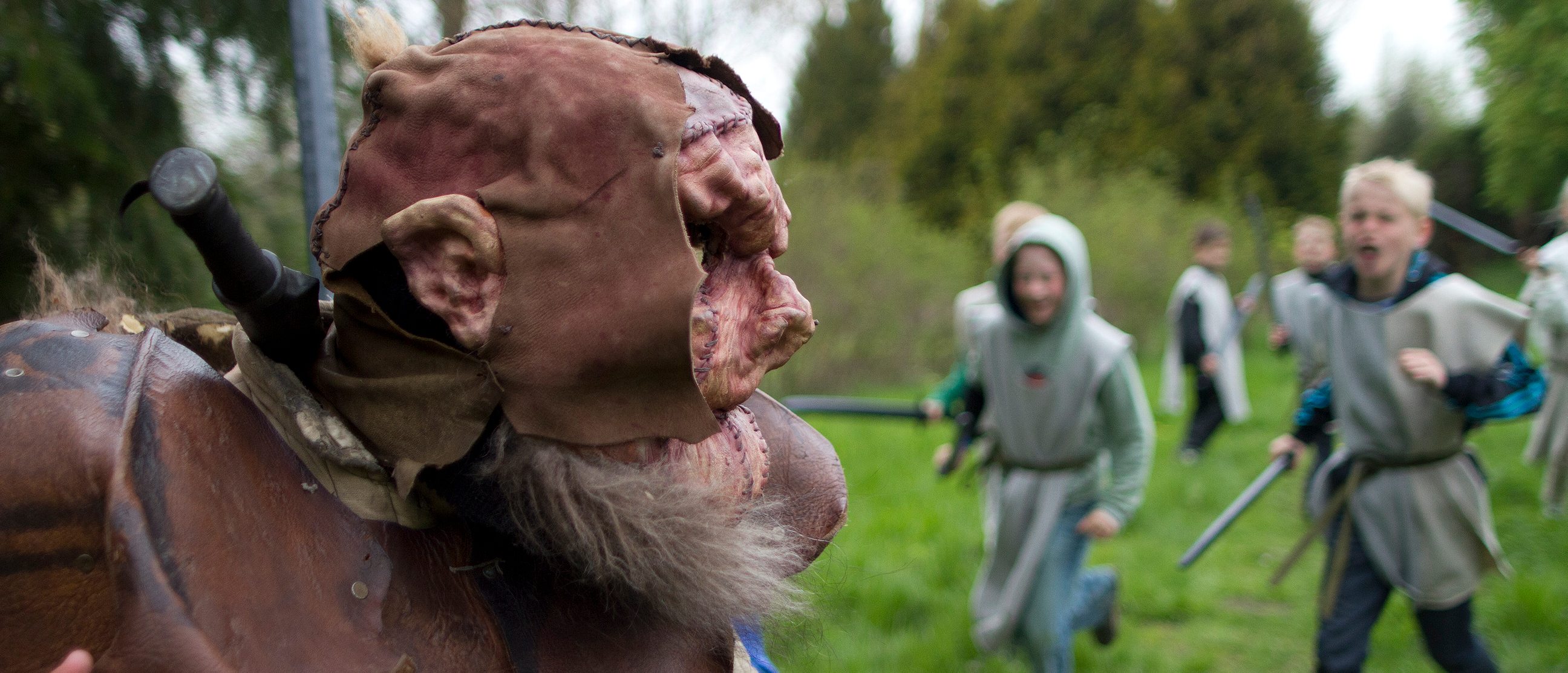
For all my eggheaded enthusiasm for the dark side of larp, the only Danish larp I was able to participate in—so little time in the country, with no free weekend to do a truly adult larp—wasn’t supposed to have much bleed. It was a hack-n-slash with 200 middle-schoolers from a Danish church group, loosely based on a fable they’d been reading, the Brothers Lionheart.
My Roads & Kingdoms co-founder Matt Goulding was the first into the fray. Earlier in the morning he was an ogre, which meant he had put on a rubber mask with a heavy burlap suit that stank of years of larp-sweat. The kids had been bused in from central Copenhagen, handed brightly colored tunics, and given a Braveheart speech of sorts. A Rollespilsakademiet organizer named René Bokær Pedersen was in full warrior mode, yelling at the kids not to touch the swords yet, that first he was going to line them all up and hit each of them very hard (“I think he’s kidding,” whispered Rasmussen, though she later explained that one of the first things she learned as a larp leader was that kids like to be hit harder with the foam weapons than you think). Once they were pacified, the middle-schoolers were led in six groups to several stations, each with its own scenario and its own vaguely pedagogical purpose.
Matt’s station was meant to teach the kids courage, which means he ambushed them from a dense wood, roaring and swinging a massive foam pike. Time and again, the groups that had been looking for this monster turned heel with real fear when he came lumbering from between the trees, growling and smelling like a thousand gym socks. And it was also supposed to teach them compassion, because they would then be shown that Matt’s ogre had a dagger stuck in his back, and once they took the dagger out, he would stop being so angry.
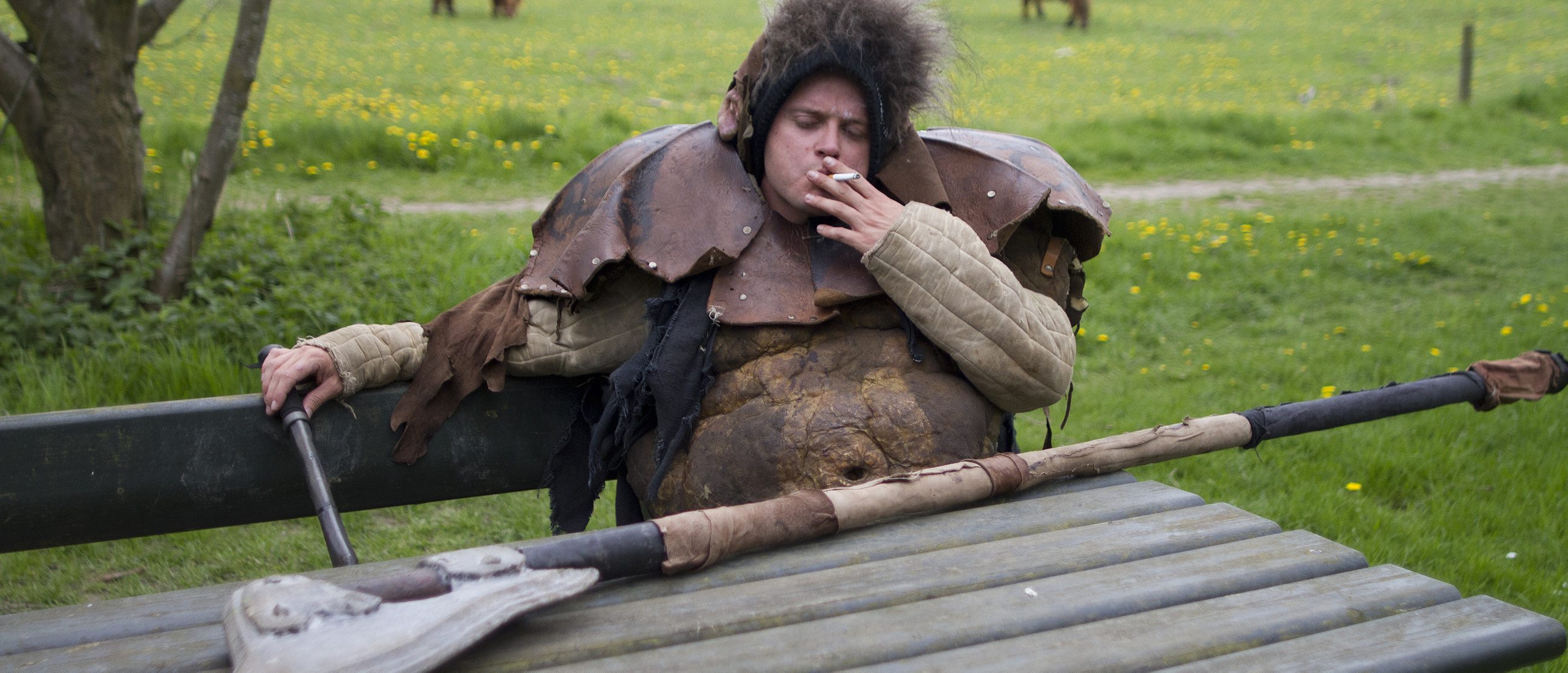
My chance came at the end, in the final battle of the day: kids versus adults. There were a dozen of us against a hundred, but we adults poured bravely over a ridge as the kids assembled below. By the end of the morning, the weaponry and the exercise had transformed these children from undifferentiated mumbling adolescents into their truer selves: hellions, heroes, cowards, and even some psychopaths. After my death in battle—a meek death that Raasted would surely have blamed squarely on my own lack of physical gifts—I lay flat on the grass, the international death pose. Rasmussen was nearby, also prone.
And then, from the middle of this church group, some bleed. One corpse robber of a kid tried to take my shield from me as I lay there, and as he did, another came up and tried to bludgeon me in my nether regions. These children of Danes, that gentle race of men, suddenly had the wild, wide eyes of horses in danger. “HaHA!” said the boy as he brought his foam sword down on my crotch. And then, in the first English I had heard from the kids all morning: “Fuck you, asshole!”
Larp had created a world, we were all living it together, and in that moment we all experienced the pain, and relief, and escape, of a little bleed.